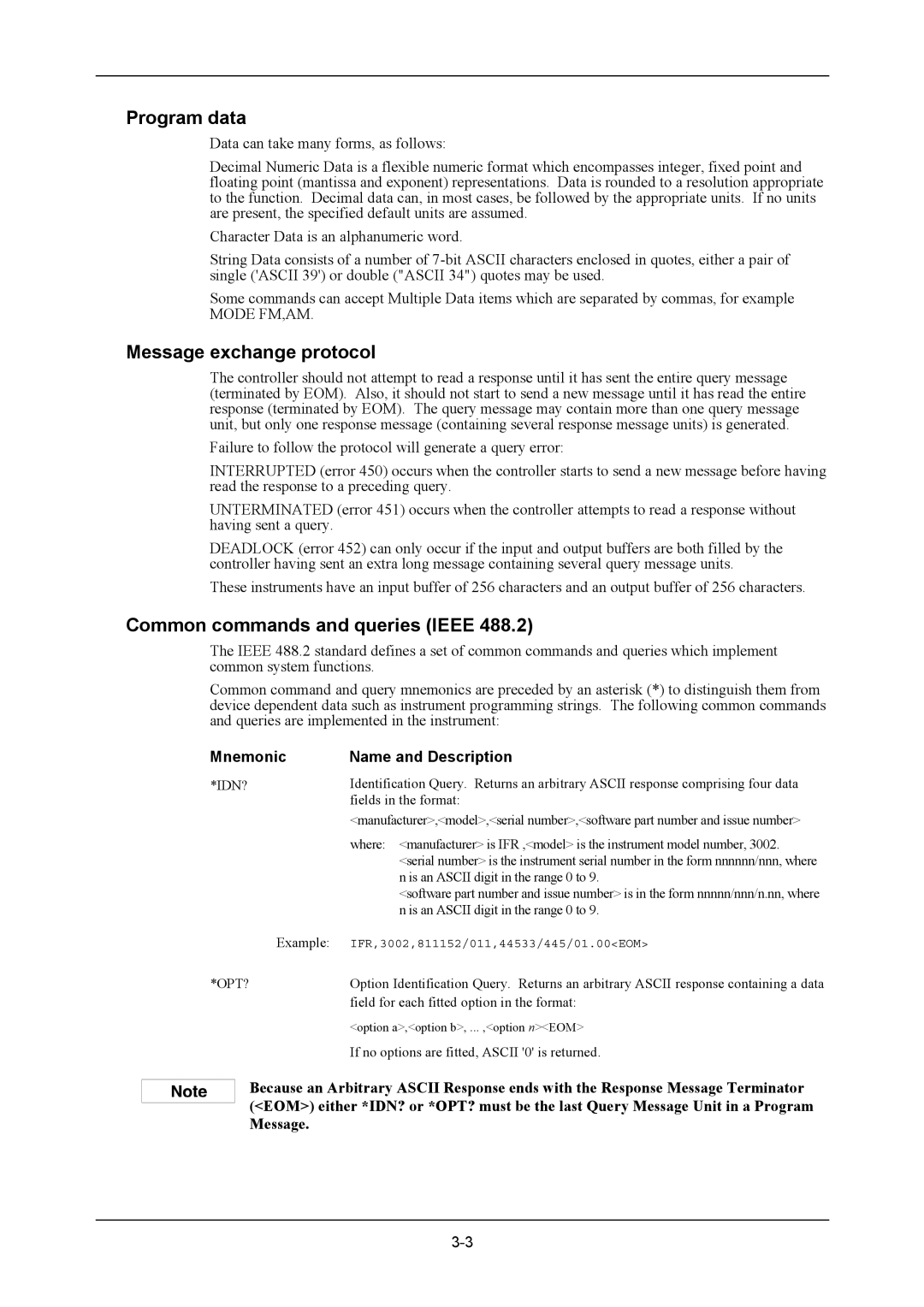
Program data
Data can take many forms, as follows:
Decimal Numeric Data is a flexible numeric format which encompasses integer, fixed point and floating point (mantissa and exponent) representations. Data is rounded to a resolution appropriate to the function. Decimal data can, in most cases, be followed by the appropriate units. If no units are present, the specified default units are assumed.
Character Data is an alphanumeric word.
String Data consists of a number of
Some commands can accept Multiple Data items which are separated by commas, for example MODE FM,AM.
Message exchange protocol
The controller should not attempt to read a response until it has sent the entire query message (terminated by EOM). Also, it should not start to send a new message until it has read the entire response (terminated by EOM). The query message may contain more than one query message unit, but only one response message (containing several response message units) is generated.
Failure to follow the protocol will generate a query error:
INTERRUPTED (error 450) occurs when the controller starts to send a new message before having read the response to a preceding query.
UNTERMINATED (error 451) occurs when the controller attempts to read a response without having sent a query.
DEADLOCK (error 452) can only occur if the input and output buffers are both filled by the controller having sent an extra long message containing several query message units.
These instruments have an input buffer of 256 characters and an output buffer of 256 characters.
Common commands and queries (IEEE 488.2)
The IEEE 488.2 standard defines a set of common commands and queries which implement common system functions.
Common command and query mnemonics are preceded by an asterisk (*) to distinguish them from device dependent data such as instrument programming strings. The following common commands and queries are implemented in the instrument:
Mnemonic
*IDN?
Name and Description
Identification Query. Returns an arbitrary ASCII response comprising four data fields in the format:
<manufacturer>,<model>,<serial number>,<software part number and issue number>
where: <manufacturer> is IFR ,<model> is the instrument model number, 3002. <serial number> is the instrument serial number in the form nnnnnn/nnn, where n is an ASCII digit in the range 0 to 9.
<software part number and issue number> is in the form nnnnn/nnn/n.nn, where n is an ASCII digit in the range 0 to 9.
Example: | IFR,3002,811152/011,44533/445/01.00<EOM> |
*OPT? | Option Identification Query. Returns an arbitrary ASCII response containing a data |
| field for each fitted option in the format: |
| <option a>,<option b>, ... ,<option n><EOM> |
| If no options are fitted, ASCII '0' is returned. |
Because an Arbitrary ASCII Response ends with the Response Message Terminator (<EOM>) either *IDN? or *OPT? must be the last Query Message Unit in a Program Message.
